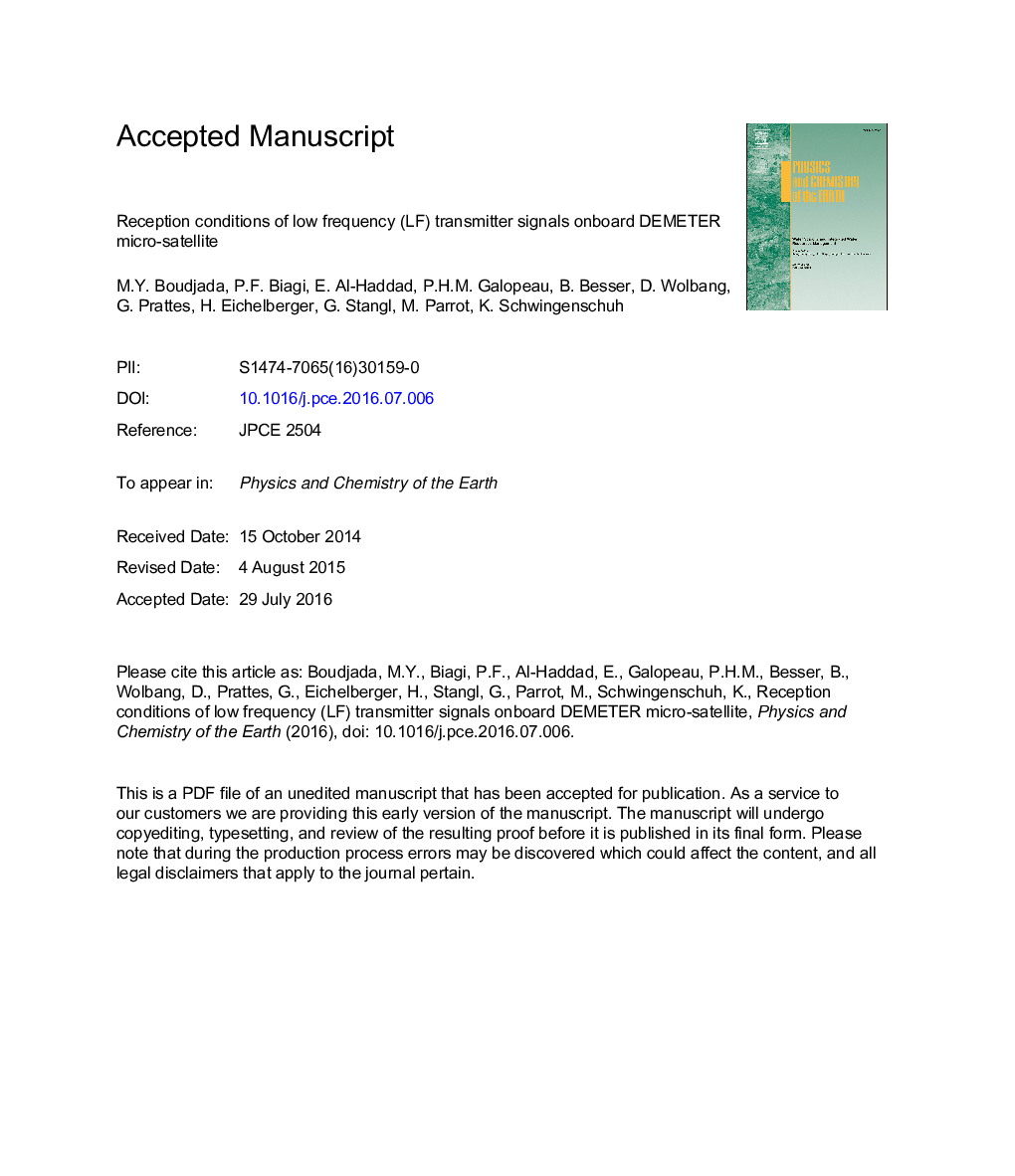| Article ID | Journal | Published Year | Pages | File Type |
|---|---|---|---|---|
| 8912425 | Physics and Chemistry of the Earth, Parts A/B/C | 2017 | 23 Pages |
Abstract
We analyse the flux density variation associated to low frequency (LF) broadcasting transmitters observed by the ICE electric field experiment onboard DEMETER micro-satellite, observed from 01st Jan. to 09th Dec. 2010. We select five stations localized around the Mediterranean and the Black seas: Tipaza (252 kHz, 02°28â²E, 36°33â²N, Algeria), Roumoules (216 kHz, 06°08â²E, 43°47â²N, Monte Carlo), Polatli (180 kHz, 32°25â²E, 39°45â²N, Turkey), Nadour (171 kHz, 02°55â²W, 35°02â²N, Morocco) and Brasov (153 kHz, 25°36â²E, 45°40â², Romania). The detection of the LF transmitter signals by DEMETER micro-satellite is found to depend on the radiated power, the emitted frequency, and the orbit paths with regard to the location of the stations. This leads us to characterize the reception condition of the LF signals and to define time intervals where the detection probability is high. We show that LF signal are regularly recorded, each 12 days, when the satellite is above the broadcasting station. The signal intensity levels are principally significant during the solar activity. Hence we find that the solar and the geomagnetic activities are slightly correlated to the maxima of LF signal as recorded by DEMETER. Also we note a drop of the intensity level several days before the occurrence of earthquakes in/around the Mediterranean and Black seas.
Keywords
Related Topics
Physical Sciences and Engineering
Earth and Planetary Sciences
Geochemistry and Petrology
Authors
M.Y. Boudjada, P.F. Biagi, E. Al-Haddad, P.H.M. Galopeau, B. Besser, D. Wolbang, G. Prattes, H. Eichelberger, G. Stangl, M. Parrot, K. Schwingenschuh,
